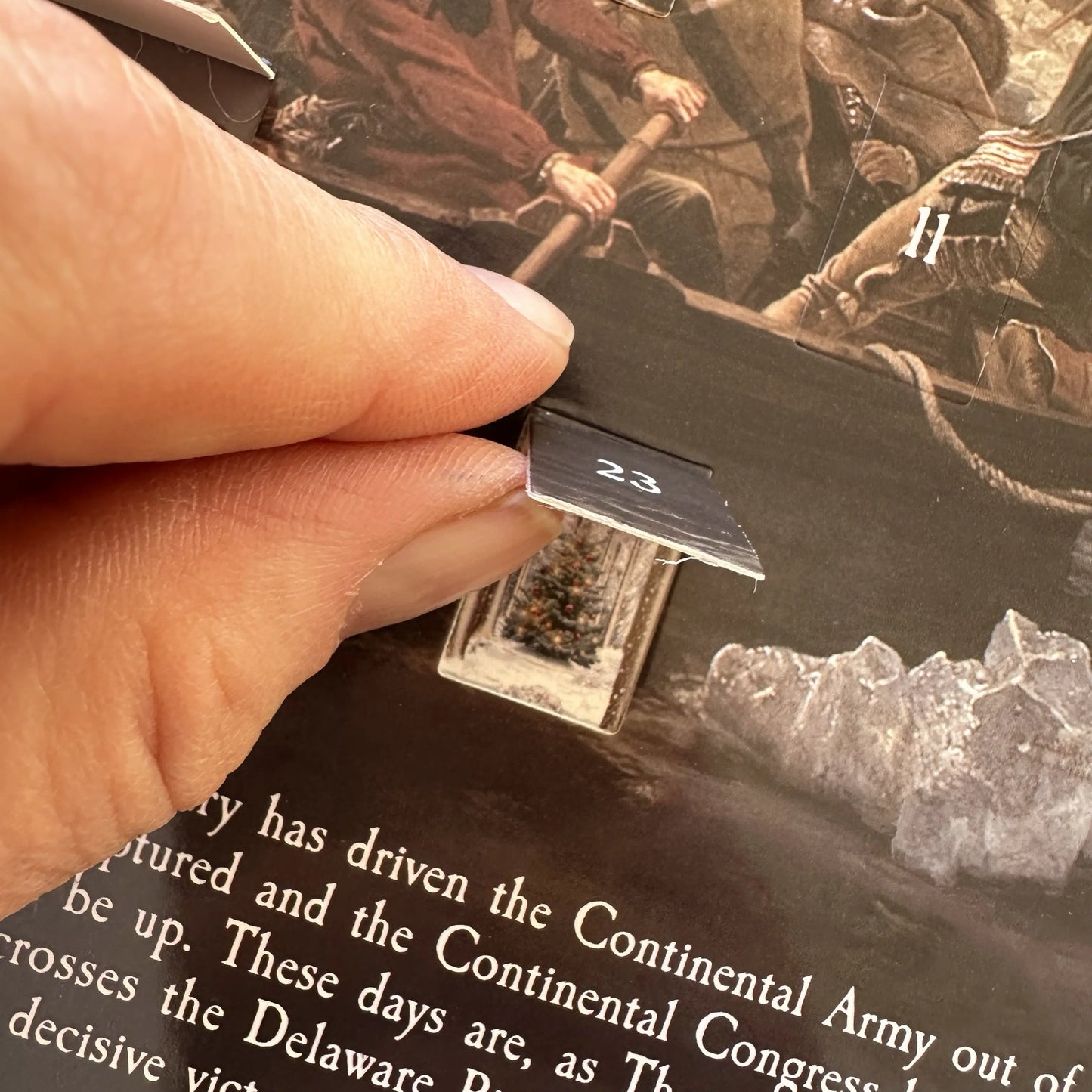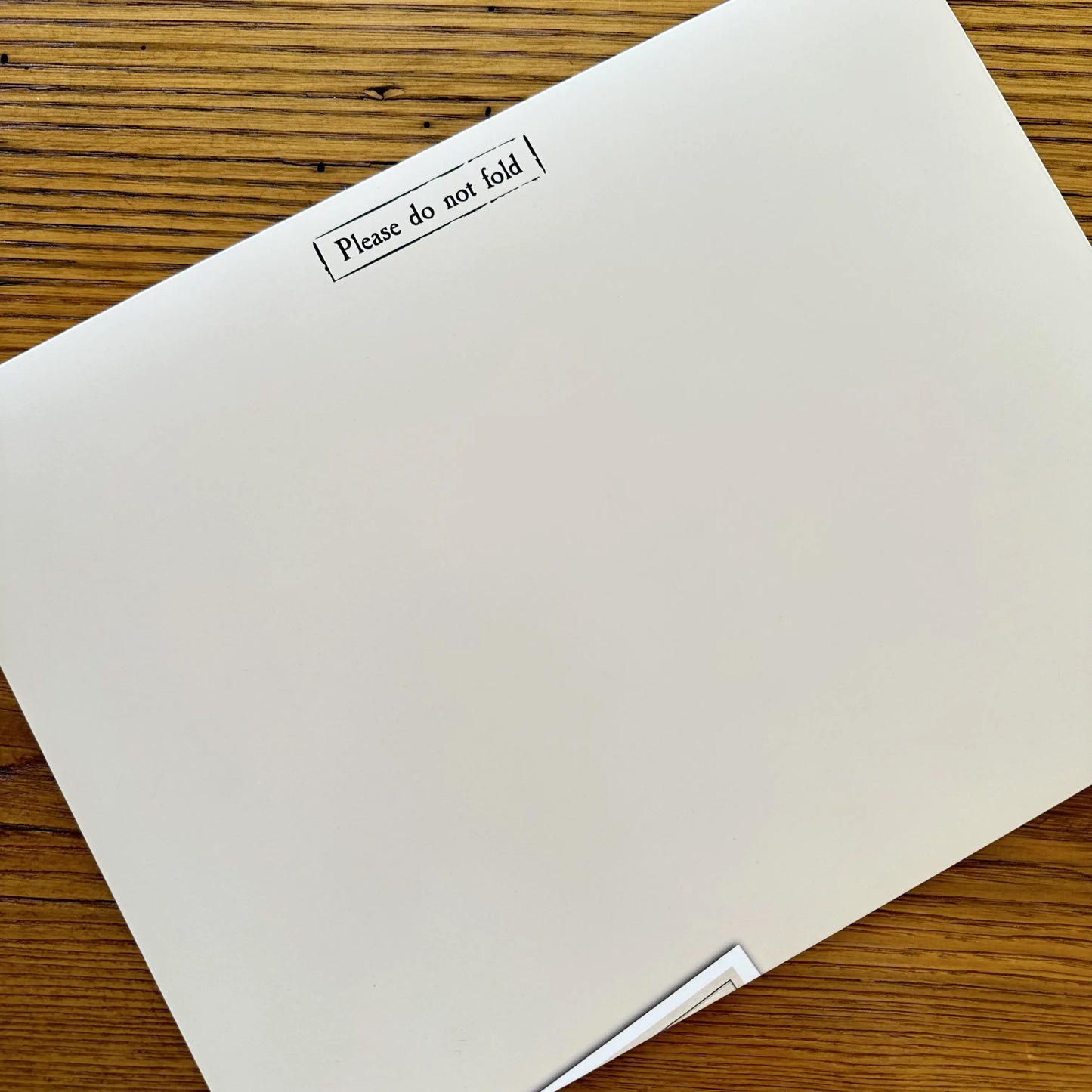The History List
"Washington Crossing the Delaware" Advent Calendar — with special mailing envelope
"Washington Crossing the Delaware" Advent Calendar — with special mailing envelope
Couldn't load pickup availability
Our first American history-themed advent calendar!
Make the countdown to Christmas historic with our advent calendar showing Washington crossing the Delaware.
Behind each of the 24 windows is a unique image that reveals a piece of history related to Washington's daring Christmas night crossing in 1776, which resulted in a crucial victory at a critical time.

This advent calendar brings families a special way to celebrate the season, sparking kids' curiosity and interest in America's path to independence. Each day reveals a new element related to this event, adding a touch of holiday excitement while sharing the story of the bravery and daring of the men that very cold Christmas night as depicted in Emanuel Leutze's famous 1851 painting.
The QR code on the back links to more information about the event and the painting, and has a day-by-day explanation of the item behind each window. (Added each day at 8am Eastern of that day so that we don't ruin the surprise.) It also links to larger versions of the map.
Printed on thick glossy paper, with artwork we commissioned for each of the days.
Includes a cardboard stand that you can add that attaches to the back so that it can stand up on a table for display. (Assemble the stand first before attaching it to the back of the calendar.)
Each calendar comes with an envelope with two maps, McConnell's Revolutionary War Map covering 1776 and 1777 and the Plan of Operations of General Washington against the King's Troops in New Jersey, 1777 map by William Faden that shows what happened that night.
Send it in the envelope we provide and you will delight a child who will remember your gift and learn more about our nation's great history every day leading up to Christmas.
Shipping
Shipping
Flat-rate shipping: Regardless of the number of items you order, the shipping price for shirts, caps, unframed prints and posters, bracelets, lapel pins, pendants, and button packs is $5.95.
For hooded and crewneck sweatshirts, mugs, and blankets, the shipping cost is $8.95.
Our flat rate shipping means you can add two or more t-shirts, sweatshirts, or caps for no additional shipping charge.
Learn more about shipping here.
All original designs are copyrighted by The History List
All original designs are copyrighted by The History List
All designs are copyrighted by The History List and the History Nerd text and design on t-shirts is a registered trademark. If you see a knock off, please let me know.
Made by America
Made by America
Almost all of the new products we offer are designed by us and made in America and most of our Rare Finds were made in America.
Our original designs are based on our nation’s history and our love of American history. Read more about other things we've created, including The History List, History Camp, and The Pursuit of History, in addition to The History List Store.
All original designs are copyrighted by The History List.
Every product that is made in America states that in the product description and includes the "Made in U.S.A." graphic. There are a relatively small number of items where we’ve not been able to find a manufacturing partner here in the States, but we continue to look.
Our nation’s history—Our original designs














More from our "Victory or Death" Collection
-
"Victory" blanket showing the stars from Washington's HQs flag — Made in America
Learn more -
Revolutionary War Victory gift box with "Victory or Death" scarf and socks with stickers and bookmarks
Learn more -
George Washington's Christmas Day Crossing of the Delaware Made in America Shirt — The Christmas shirt for history nerds
Learn more -
George Washington Signature "Victory or Death" woven scarf
Learn more -
"Victory or Death" Socks — Made in USA
Learn more -
"Proclaim Liberty" Pin Set — Sold individually and in a set of 3
Learn more
Love it!
Lovely & unique for history buffs! Can't wait to gift this to my brother!!
Great historical Christmas calendar for the history buff. Fun and interesting way to learn more about America's beginnings and celebrate the holiday. Highly recommend.
My calendar arrived quickly, packed great . Great job!!!
Each year I send my son an Advent calendar. He's an American History teacher so when I found this calendar, I had to purchase it. It arrived quickly and it's everything he loves in an Advent calendar. It even inspired him to look for additional reading materials on Washington and the Delaware. It's a perfect gift for any History lover.
Perfect for the grandkids to learn history!!
What a fantastic idea for an advent calendar! And it looks beautifully printed. I’m looking forward to starting it on Dec 1st!


































